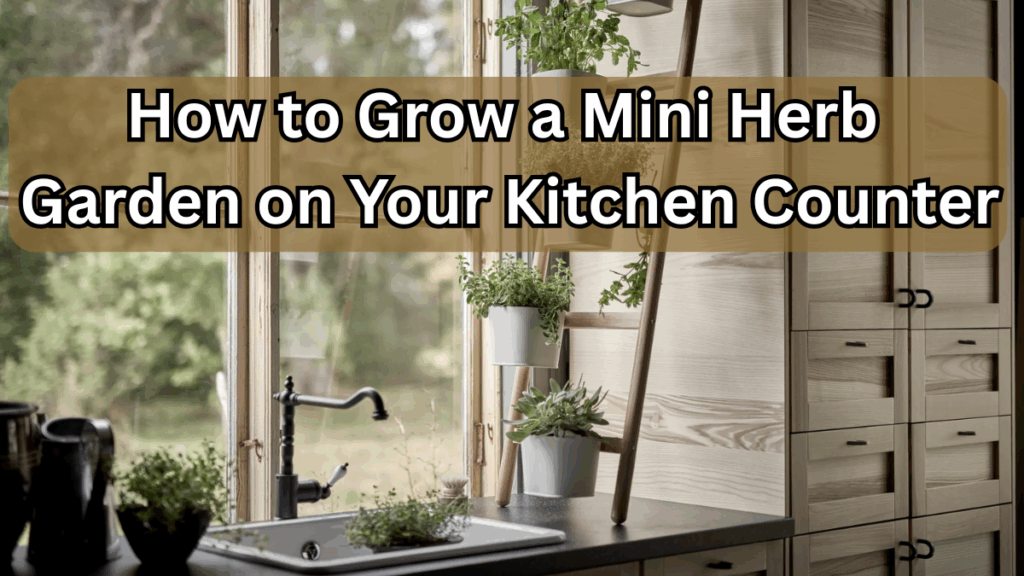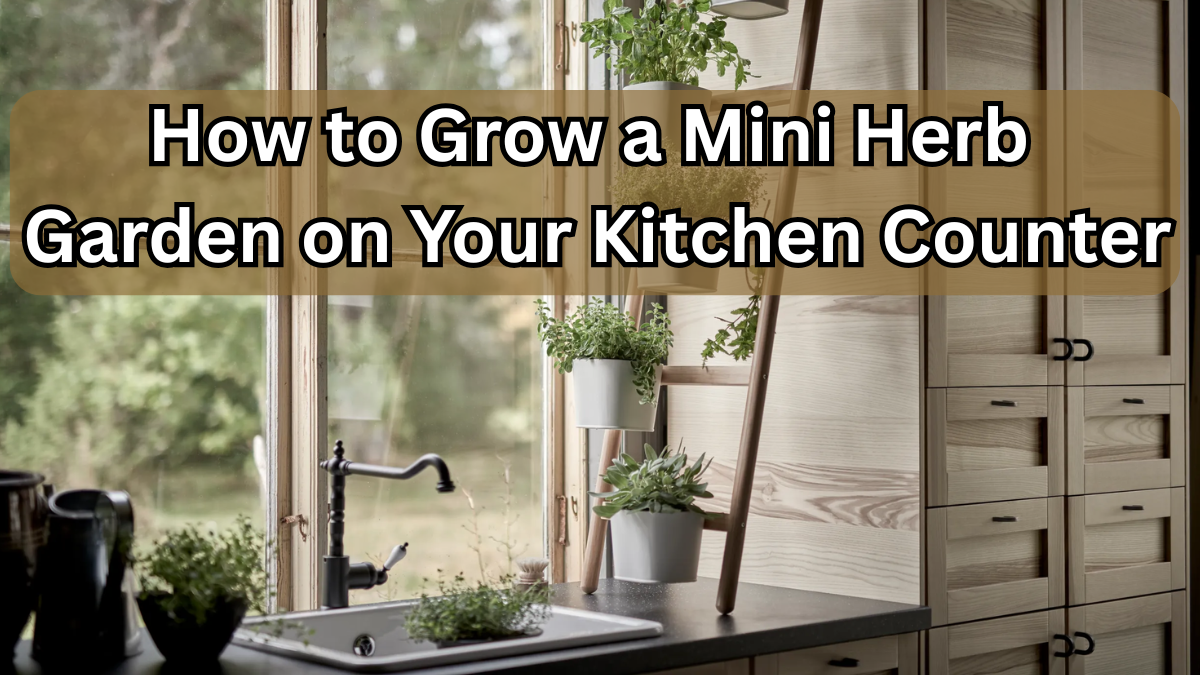A kitchen garden filled with fresh herbs not only enhances the flavors of your meals but also brings a touch of greenery to your indoor space. With a little planning, you can easily grow herbs indoors even if you have limited space. Here’s how to create a thriving indoor herb garden right on your kitchen counter or windowsill.

Why Start an Indoor Herb Garden?
Creating a mini herb garden indoors has multiple benefits:
-
Fresh, organic herbs at your fingertips for cooking
-
Aromatic greenery that brightens up your kitchen space
-
Cost-effective compared to buying herbs regularly
-
Encourages healthy eating and mindful gardening
Whether it’s a windowsill garden or a small counter setup, growing herbs indoors is a rewarding experience.
Choosing the Right Herbs for Your Kitchen Garden
Not all herbs thrive indoors. Some popular and easy-to-grow options include:
| Herb | Ideal Location | Care Level | Notes |
|---|---|---|---|
| Basil | Sunny windowsill | Medium | Loves warmth, pinch regularly to encourage growth |
| Mint | Partial sunlight | Easy | Can spread quickly, best in its own pot |
| Parsley | Bright indirect light | Medium | Takes longer to germinate, keep soil moist |
| Rosemary | Sunny spot | Medium | Prefers well-drained soil |
| Thyme | Sunny and dry | Easy | Hardy and low-maintenance |
Tip: Choose 3–5 herbs to start, ensuring you have enough sunlight and space for them to grow comfortably.
Step-by-Step Guide to Grow Herbs Indoors
1. Select Containers
-
Use small pots, mason jars, or any clean container with drainage holes
-
For a kitchen garden, choose lightweight containers that are easy to move
2. Choose the Right Soil
-
A mix of potting soil with compost works best
-
Avoid heavy garden soil as it can retain too much water indoors
3. Planting Your Herbs
-
Sow seeds according to the packet instructions
-
If using cuttings, make sure the stems are healthy and plant them in moist soil
4. Provide Adequate Light
-
Herbs need at least 4–6 hours of sunlight daily
-
A south-facing windowsill garden is ideal
-
If sunlight is limited, consider a small LED grow light
5. Water and Maintain
-
Water when the top inch of soil feels dry
-
Avoid overwatering as indoor pots retain moisture longer
-
Trim leaves regularly to promote bushier growth
Tips for a Thriving Indoor Herb Garden
-
Rotate pots occasionally to ensure all sides receive sunlight
-
Fertilize once a month with a diluted organic fertilizer
-
Keep pests away by wiping leaves with a damp cloth
-
Use a tray or saucer under pots to catch excess water
Kitchen Counter Herb Garden Layout Ideas
| Layout | Description | Suitable Herbs |
|---|---|---|
| Single row along windowsill | Simple and space-saving | Basil, Parsley, Mint |
| Tiered shelf setup | Maximizes vertical space | Thyme, Rosemary, Oregano |
| Mixed pot grouping | Decorative & functional | Chives, Cilantro, Basil |
A well-planned layout makes your indoor herb garden both practical and visually appealing.
FAQs About Growing Herbs Indoors
Q1: Can I grow herbs indoors without natural sunlight?
A: Yes, using a full-spectrum LED grow light for 6–8 hours a day can mimic sunlight effectively.
Q2: How often should I water my indoor herbs?
A: Water when the top inch of soil feels dry. Most herbs prefer slightly moist soil, not soggy.
Q3: Can I grow herbs in recycled containers?
A: Absolutely! Just make sure they have drainage holes to prevent root rot.
Q4: How long does it take for herbs to be ready for harvest?
A: It varies by herb. Fast-growing ones like basil and mint can be harvested in 4–6 weeks, while others like rosemary may take longer.
Click here to learn more
